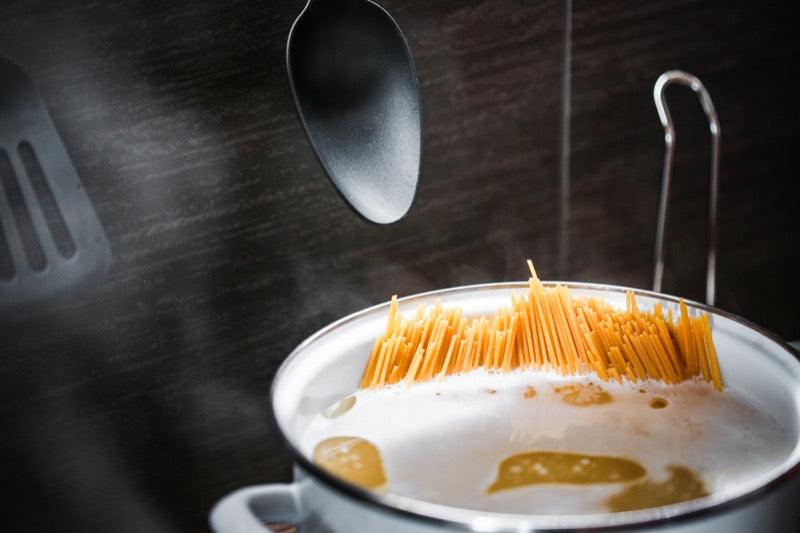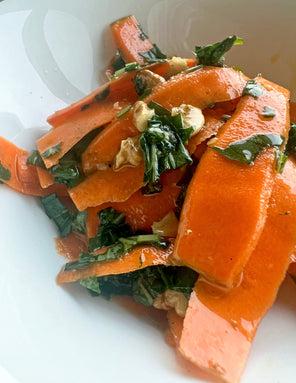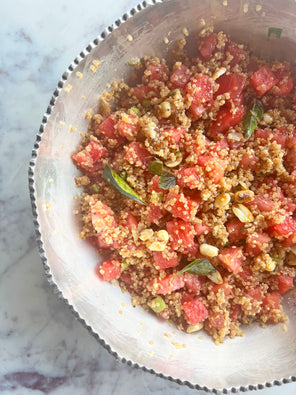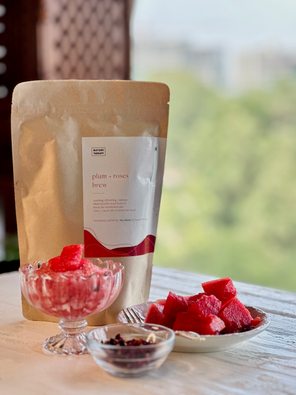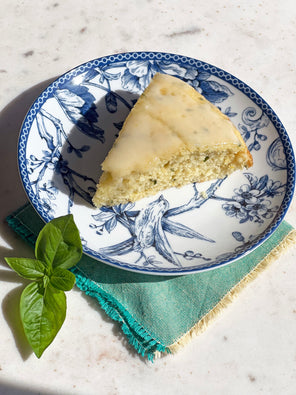
Perhaps the biggest concern most have about cooking pasta is how to get the pasta boiled to “just right”. Most experienced cooks will know that the window for the pasta to be perfect is pretty narrow. You’ve all heard the phrase: cook the pasta to al dente – what does this mean? And how do you get there?
“Al dente” is Italian for “to the tooth” which means cooked just so as to be still firm when bitten. An overcooked pasta becomes mushy in sauces, over absorbs liquid and really negates the whole pasta-eating experience.
Here I give you a few tried + tested rules to boiling the pasta the right way:
Step 1: Always use a large pot to boil the water. This gives the pasta plenty of room to move about in. as a general rule: one liter of water per 100g of dried pasta
Step 2: Salt the water. And I mean really salt the water. The water must taste like the ocean. This gives the pasta the flavor burst! 10g salt per liter of water
Step 3: Only when the water is boiling vigorously, add the pasta. To quicken the pace, you can go ahead and cover the pot with a lid until the water bubbles. Once the pasta is in, do not cover the pot again.
Step 4: Stir the pasta! At least 2-3 times during its cooking period – this ensures no clumping of pasta
Step 5: Test the pasta 2 minutes before the done time
Step 6: Save at least one cup of the pasta water to add into the sauce
Step 7: Drain the pasta out
Step 8: Keep in a colander until ready to use. Ideally, the sauce must be ready for you to stir the pasta straight into
OTHER TIPS FOR GOOD PASTA:
- Do not add oil to the water. Oil clings to the pasta, making it slick and hence, the sauce will not cling to pasta
- Add salt to the cold water – this will help bring the water to boil faster
- Always follow the instructions of the pasta box you’re cooking from
- The above rules are only for dried pasta – fresh pasta takes only 2-3 minutes to cook
- Stuffed pasta like ravioli, tortellini and gnocchi are ready to remove once they float up to the top. Remember to use a larger pot for these kinds of pastas, or do them in batches
- Never wash your pasta after it’s boiling – this will wash away the starch that you have so lovingly created (and the flavor!)
- It is ideal to have the sauce ready before you prepare the pasta, unless otherwise specified
STORING PASTA
It’s a matter of good planning to meal prep and make things easy and light, especially for big parties or hectic weekdays. Pre-boiling the pasta makes life a lot easier in the kitchen at times.
To store cooked pasta without sauce:
- Make sure pasta is at room temperature
- Place in an air tight container or zip lock bag (make sure no air can go in)
- Drizzle some olive oil over the pasta to coat – this locks in the moisture into the pasta
- Refrigerate for up to 5 days
- To reheat: add the pasta into the boiling water for 30 seconds before straining. This shock-cooks them and also removes most of the oil coating so that it can soak in the sauce
To store cooked pasta with sauce:
- Store in an airtight container and refrigerate up to 3 days (depending upon the kind of sauce; a creamy dairy-based sauce may last only 2 days, whereas a tomato based one can last 4 days)
- To reheat, place the pasta with the sauce in a baking dish with aluminum foil covering it to retain the moisture. Bake for roughly 20 minutes at 180C
- You can also reheat on the stove top, in a pan at low heat, stirring occasionally.
MEASURING PASTA
Measuring pasta and getting it correct is perhaps even more daunting than getting the boiling part right.
The average quantity calculated per person is between 60-100g depending upon the appetite as well as meal size. For example, if the pasta dish is served as a starter, measure 60g/person. If it’s a grand meal with many dishes, 70-80g/person is ideal. However, if the pasta is considered the main dish with only one or two sides, you can lean towards approximately 100g/person.
These measurements also greatly vary depending upon the size and shape of the pasta.
Below are a few guidelines:
Spaghetti / Fettucine / Linguini
- Place the dry pasta between your thumb and forefinger – this is the amount of serving per person
- Some pasta spoons have a hole in the middle – this measures to one serving of spaghetti
Penne / Fusilli / Farfalle / Rigatoni / Medium Shells
- One serving of 60g is roughly ¾ cup dried pasta
Macaroni / Rotini / Ditali / Elbows
- One serving of 60g is roughly ½ cup
Lasagna
- Approximately 2 pieces of dry lasagna sheets per person
Gnocchi
- 100g / person
Ravioli / Tortellini
- 175-200g / person or
- 8 large ravioli / person or
- 16 tortellini / person
NOTE:
Measurements of fresh pasta vary considerably, as do their cooking time. Always read the instructions that come along with them.
Disclosure:
A note about this site: We use Amazon affiliate links at times. We are a participant in the Amazon Services LLC Associates Program, an affiliate advertising program designed to provide a means for us to earn fees by linking to Amazon.com and affiliated sites.


